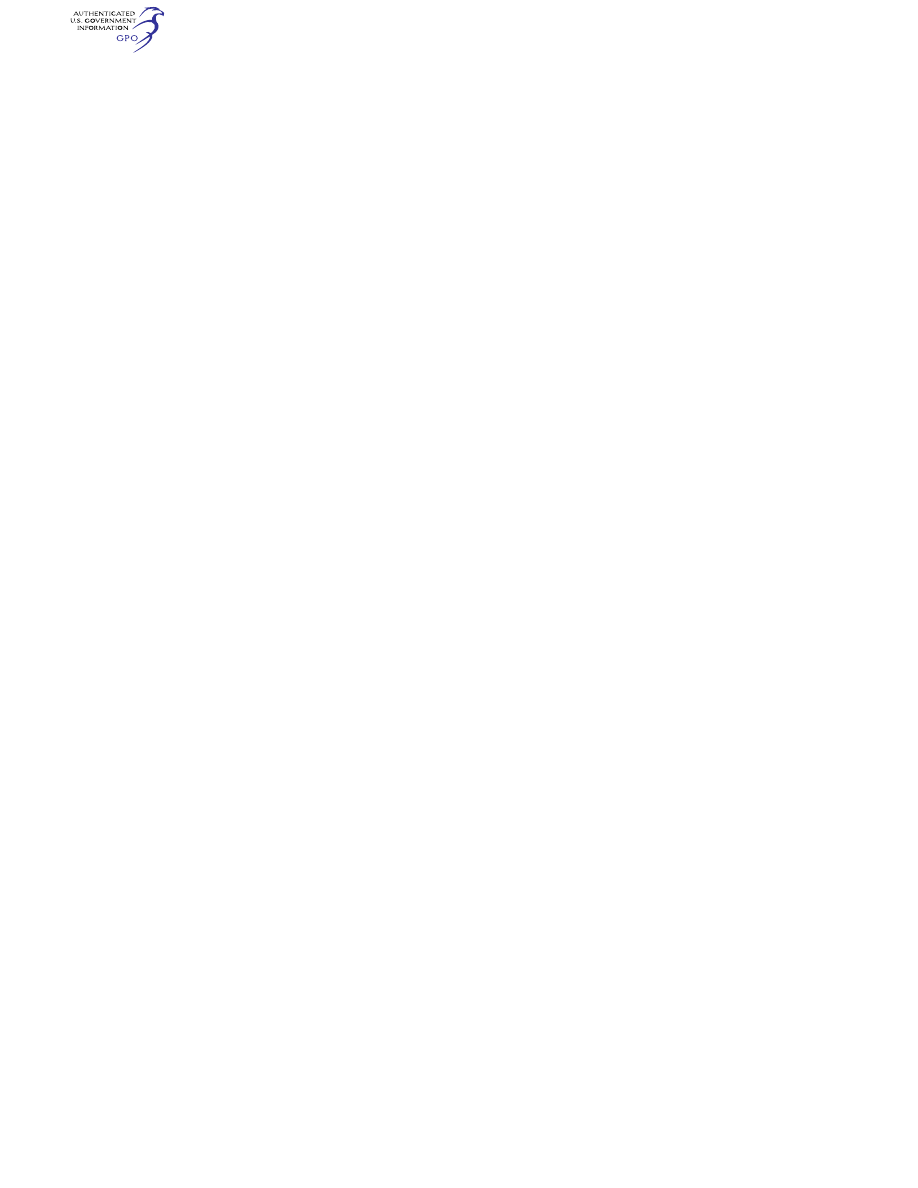
611
Federal Aviation Administration, DOT
§ 29.779
§ 29.773
Pilot compartment view.
(a)
Nonprecipitation conditions. For
nonprecipitation conditions, the fol-
lowing apply:
(1) Each pilot compartment must be
arranged to give the pilots a suffi-
ciently extensive, clear, and undis-
torted view for safe operation.
(2) Each pilot compartment must be
free of glare and reflection that could
interfere with the pilot’s view. If cer-
tification for night operation is re-
quested, this must be shown by ground
or night flight tests.
(b)
Precipitation conditions. For pre-
cipitation conditions, the following
apply:
(1) Each pilot must have a suffi-
ciently extensive view for safe oper-
ation—
(i) In heavy rain at forward speeds up
to
V
H
; and
(ii) In the most severe icing condi-
tion for which certification is re-
quested.
(2) The first pilot must have a win-
dow that—
(i) Is openable under the conditions
prescribed in paragraph (b)(1) of this
section; and
(ii) Provides the view prescribed in
that paragraph.
(c)
Vision systems with transparent dis-
plays. A vision system with a trans-
parent display surface located in the
pilot’s outside field of view, such as a
head up-display, head mounted display,
or other equivalent display, must meet
the following requirements in non-
precipitation and precipitation condi-
tions:
(1) While the vision system display is
in operation, it must compensate for
interference with the pilot’s outside
field of view such that the combination
of what is visible in the display and
what remains visible through and
around it, allows the pilot compart-
ment to satisfy the requirements of
paragraphs (a) and (b) of this section.
(2) The pilot’s view of the external
scene may not be distorted by the
transparent display surface or by the
vision system imagery. When the vi-
sion system displays imagery or any
symbology that is referenced to the im-
agery and outside scene topography,
including attitude symbology, flight
path vector, and flight path angle ref-
erence cue, that imagery and sym-
bology must be aligned with, and
scaled to, the external scene.
(3) The vision system must provide a
means to allow the pilot using the dis-
play to immediately deactivate and re-
activate the vision system imagery, on
demand, without removing the pilot’s
hands from the primary flight and
power controls, or their equivalent.
(4) When the vision system is not in
operation it must permit the pilot
compartment to satisfy the require-
ments of paragraphs (a) and (b) of this
section.
[Doc. No. 5084, 29 FR 16150, Dec. 3, 1964, as
amended by Amdt. 29–3, 33 FR 967, Jan. 26,
1968; Docket FAA–2013–0485, Amdt. 29–56, 81
FR 90170, Dec. 13, 2016; Docket FAA–2016–9275,
Amdt. 29–57, 83 FR 9423, Mar. 6, 2018]
§ 29.775
Windshields and windows.
Windshields and windows must be
made of material that will not break
into dangerous fragments.
[Amdt. 29–31, 55 FR 38966, Sept. 21, 1990]
§ 29.777
Cockpit controls.
Cockpit controls must be—
(a) Located to provide convenient op-
eration and to prevent confusion and
inadvertent operation; and
(b) Located and arranged with re-
spect to the pilot’s seats so that there
is full and unrestricted movement of
each control without interference from
the cockpit structure or the pilot’s
clothing when pilots from 5
′
2
″
to 6
′
0
″
in
height are seated.
§ 29.779
Motion and effect of cockpit
controls.
Cockpit controls must be designed so
that they operate in accordance with
the following movements and actu-
ation:
(a) Flight controls, including the col-
lective pitch control, must operate
with a sense of motion which cor-
responds to the effect on the rotor-
craft.
(b) Twist-grip engine power controls
must be designed so that, for lefthand
operation, the motion of the pilot’s
hand is clockwise to increase power
when the hand is viewed from the edge
VerDate Sep<11>2014
09:06 Jun 28, 2024
Jkt 262046
PO 00000
Frm 00621
Fmt 8010
Sfmt 8010
Y:\SGML\262046.XXX
262046
jspears on DSK121TN23PROD with CFR

612
14 CFR Ch. I (1–1–24 Edition)
§ 29.783
containing the index finger. Other en-
gine power controls, excluding the col-
lective control, must operate with a
forward motion to increase power.
(c) Normal landing gear controls
must operate downward to extend the
landing gear.
[Amdt. 29–24, 49 FR 44437, Nov. 6, 1984]
§ 29.783
Doors.
(a) Each closed cabin must have at
least one adequate and easily acces-
sible external door.
(b) Each external door must be lo-
cated, and appropriate operating proce-
dures must be established, to ensure
that persons using the door will not be
endangered by the rotors, propellers,
engine intakes, and exhausts when the
operating procedures are used.
(c) There must be means for locking
crew and external passenger doors and
for preventing their opening in flight
inadvertently or as a result of mechan-
ical failure. It must be possible to open
external doors from inside and outside
the cabin with the rotorcraft on the
ground even though persons may be
crowded against the door on the inside
of the rotorcraft. The means of opening
must be simple and obvious and so ar-
ranged and marked that it can be read-
ily located and operated.
(d) There must be reasonable provi-
sions to prevent the jamming of any
external doors in a minor crash as a re-
sult of fuselage deformation under the
following ultimate inertial forces ex-
cept for cargo or service doors not suit-
able for use as an exit in an emergency:
(1) Upward—1.5g.
(2) Forward—4.0g.
(3) Sideward—2.0g.
(4) Downward—4.0g.
(e) There must be means for direct
visual inspection of the locking mecha-
nism by crewmembers to determine
whether the external doors (including
passenger, crew, service, and cargo
doors) are fully locked. There must be
visual means to signal to appropriate
crewmembers when normally used ex-
ternal doors are closed and fully
locked.
(f) For outward opening external
doors usable for entrance or egress,
there must be an auxiliary safety
latching device to prevent the door
from opening when the primary latch-
ing mechanism fails. If the door does
not meet the requirements of para-
graph (c) of this section with this de-
vice in place, suitable operating proce-
dures must be established to prevent
the use of the device during takeoff and
landing.
(g) If an integral stair is installed in
a passenger entry door that is qualified
as a passenger emergency exit, the
stair must be designed so that under
the following conditions the effective-
ness of passenger emergency egress will
not be impaired:
(1) The door, integral stair, and oper-
ating mechanism have been subjected
to the inertial forces specified in para-
graph (d) of this section, acting sepa-
rately relative to the surrounding
structure.
(2) The rotorcraft is in the normal
ground attitude and in each of the atti-
tudes corresponding to collapse of one
or more legs, or primary members, as
applicable, of the landing gear.
(h) Nonjettisonable doors used as
ditching emergency exits must have
means to enable them to be secured in
the open position and remain secure for
emergency egress in sea state condi-
tions prescribed for ditching.
[Doc. No. 5084, 29 FR 16150, Dec. 3, 1964, as
amended by Amdt. 29–20, 45 FR 60178, Sept.
11, 1980; Amdt. 29–29, 54 FR 47320, Nov. 13,
1989; Amdt. 27–26, 55 FR 8003, Mar. 6, 1990;
Amdt. 29–31, 55 FR 38966, Sept. 21, 1990]
§ 29.785
Seats, berths, litters, safety
belts, and harnesses.
(a) Each seat, safety belt, harness,
and adjacent part of the rotorcraft at
each station designated for occupancy
during takeoff and landing must be free
of potentially injurious objects, sharp
edges, protuberances, and hard surfaces
and must be designed so that a person
making proper use of these facilities
will not suffer serious injury in an
emergency landing as a result of the
inertial factors specified in § 29.561(b)
and dynamic conditions specified in
§ 29.562.
(b) Each occupant must be protected
from serious head injury by a safety
belt plus a shoulder harness that will
prevent the head from contacting any
injurious object, except as provided for
in § 29.562(c)(5). A shoulder harness
(upper torso restraint), in combination
VerDate Sep<11>2014
09:06 Jun 28, 2024
Jkt 262046
PO 00000
Frm 00622
Fmt 8010
Sfmt 8010
Y:\SGML\262046.XXX
262046
jspears on DSK121TN23PROD with CFR

